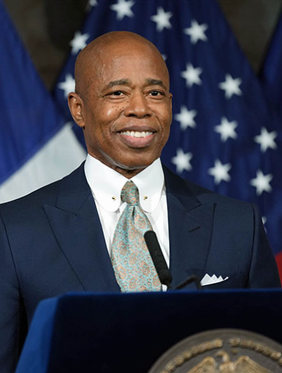The New Arab & agencies
09 July, 2022

Jabeur of Tunisia during the trophy ceremony after losing to Elena Rybakina of Kazakhstan in the womens singles final of The Championships Wimbledon 2022. [Photo by Robert Prange/Getty Images]
Hailing her as the "nation's pride" and "ambassador of happiness", Tunisians remained enthralled with tennis star Ons Jabeur Saturday, celebrating her presence in the prestigious Wimbledon final despite her loss.
Jabeur became the world number two player and then made history as the first African or Arab woman to reach a Grand Slam singles final in the modern era.
Although she missed out on the title at the All England Lawn Tennis Club, she said she'll learn from the experience and can't wait to play in another final.
"I just try to inspire as many generations as I can," she said.
At a cafe not far from the Hammam Sousse tennis club where the 27-year-old began her career, a group of young Tunisian men had been intently watching the match, yelling in excitement at each point she won.
"She's our Tunisian national product," said Safwen Ghairi, a 21-year-old student.

He and his friends had rushed through their traditional Eid al-Adha meal to get to the cafe -- one of the few open on the national holiday which began Saturday -- to watch the match.
Jabeur represents the African continent "and the region at Wimbledon", Ghairi said. "It's a real achievement."
Nation's pride
His friend Zaher Edine Dahman, 27, called Jabeur "our ambassador of happiness".
"The authorities could never match the publicity Ons Jabeur has brought for Tunisia, even if they spent millions," he said.
"We used to dream of a Tunisian player simply qualifying for Wimbledon, and today, Tunisia is at the final," he added.
Her former trainer Nabil Mlika told AFP after the match that Jabeur was "the nation's pride", wishing her luck for the US Open, which begins next month.
Her success has been a rare good news story for a North African country mired in economic and political crisis, made more acute by the coronavirus pandemic and the impact of the war in Ukraine.
On Friday, the country's Sports Minister Kamel Deguiche said celebrations were planned for after Wimbledon and that he wanted to officially award Jabeur the title of "Minister of Happiness", adding: "It's the state's duty to her."
Inspired by her mum
The youngest of four, born on August 28, 1994 in Ksar Hellal, Jabeur started her career as a child on hotel tennis courts in the nearby resort town of Hammam Sousse.
She has called her mother her inspiration.
"She is a big fan of tennis and took me to a tennis club when I was only three years old," she said in a BBC column.
"My mum used to play with her friends and I used to commentate... I used to spend the whole day there in the tennis club and I loved it," she added.
Jabeur said her mother was not in the crowd to watch her play on Saturday because there "wasn't enough time" for her to apply for a visa.
Jabeur moved o the capital, Tunis, at the age of 12 to train at a highly rated state-backed sports club.
She made a splash on the global scene in 2011, winning the girls' singles at the French Open when she was 16.
She reached the world's top 50 at the Australian Open in January 2020 -- the first Arab woman to reach a Grand Slam quarter-final - and has since surged up the rankings.
Her fame has sparked an increased interest in tennis in her home country, and membership levels have skyrocketed at her home club, from 320 in 2018 to more than 700 today.
Wimbledon women’s final makes tennis history
Wimbledon women's final was destined to be historic. Elena Rybakina on Saturday became the first ever player representing Kazakhstan to win a Grand Slam. She beat Tunisia's Ons Jabeur, the first woman from Africa to reach a Grand Slam final. Christopher Clarey, author and New York Times tennis correspondent, joins Nick Schifrin to discuss.
Read the Full Transcript
Nick Schifrin:
On the English grass at Center Court, today's Wimbledon women's final was destined to be historic. Elena Rybakina became the first ever player representing Kazakhstan to win a Grand Slam. She beat Tunisia's Ons Jabeur, the first woman from Africa to reach a Grand Slam final. To discuss this I'm joined from Wimbledon by New York Times Tennis Correspondent and Author Christopher Clarey. Christopher Clarey, welcome to "PBS News Weekend." Both women's stories, of course, are interesting, first Rybakina, how did she win? And how did she end up playing for Kazakhstan?
Christopher Clarey, New York Times:
Well, Elena Rybakina is a very powerful six footer who can run like a deer to be honest with you. And she played a wonderful match today. And started a bit slowly was nervous. I mean, both women are in uncharted territory form. Not ever having gotten past the quarterfinals in the Grand Slam before in Singles. So we didn't know how they were going to react. Rybakina had trouble with their strokes early and she really found a rhythm in the second and third sets, started dominating with her big flat shots, track down a lot of gibberish signature drop shots, and finish it off. And the amazing thing was when she won, this is the biggest moment of her life. It was like she basically just won the first point of the match. Hardly any expression on her part. Hardly any emotion. But the emotion came later in the press conference when she broke down in tears. But on the court, you'd never would have known it was her first Wimbledon title.
Nick Schifrin:
And tell us about her story, she decided to play for Kazakhstan four years ago. How did that come about?
Christopher Clarey:
There been a number of Russian players over the years, when they've been lacking funding at home. We'll look to some of the other Soviet Republics where the fundings greater, looking for some athletes who can play certain sports, and then make a shift. She wasn't the first but she was, in many ways, one of the most recent ones to do it. And at the time, she wasn't considered one of the most promising Russian juniors, wasn't getting the funding that she needed. And so she decided to switch, doesn't speak Kazakh obviously, there's language, there's Kazakh and Russian, big former Republic. And, you know, she got coaching, all kinds of support. And we just talked to her a few minutes ago, and she was saying she wasn't sure she would have actually won this title if she hadn't had that backing from Kazakhstan. But the timing, of course, is awkward for the club and for people in tennis because Russians and Belarusians have been banned from Wimbledon this year, because of the invasion of Ukraine. And I don't think the angling club had in mind to having an ethnic Russian who grew up in Russia and recently lived there receiving the trophy on the center court today. That wasn't part of the operational plan.
Nick Schifrin:
Well, there's always politics when it comes to this. So tell us about that decision that Wimbledon made, the other Grand Slam tennis tournaments have not banned Russians. Why did Wimbledon?
Christopher Clarey:
Look, I think it was a combination of factors. You're right, Wimbledon is really an outlier on this issue in tennis, not so much in world sport, but definitely in tennis. And thinking I think was the British government led then by Boris Johnson was pretty adamant that there had to be some sort of either concession from the Russian players, or they were to take part, some sort of denunciation of their government and its objectives in Ukraine, or some other sort of gesture and I felt the club here that runs Wimbledon felt they had to do something, and they didn't want to make the players basically go against their country publicly could have put their families at risk. So they decided to disband Russians and Belarusians altogether, which is been a long time since that happened in tennis, since post World War II era with the Germans and the Japanese.
So it was pretty extraordinary. And there was a lot of reaction within the tennis tours, they took away the ranking points, which is unprecedented from Wimbledon, which created a lot of backlash to players who did very well here this year, for example, will not rise in the rankings. Some of them will even drop.
Nick Schifrin:
Let's talk about Ons Jabeur. The crowds seem to be behind her certainly all day, she's well liked on the tour. She's known as the Minister of Happiness. What does she represent the women's games?
Christopher Clarey:
Look, I think people were really excited and they still are about Ons Jabeur and all that she can bring to tennis and sports. There aren't that many people in the history of this game, from Arab nations, or from the African continent on the women's side who have done particularly well. Ons is an exceptional talent. And she's very charismatic, extremely likeable. Her game is magnetic, all kinds of variety and style and panache there. So I think, really, everybody was sort of primed to celebrate that and, in some ways, Elena Rybakina upset the applecart in that regard. But I think Ons, she brings is a chance to really reach a whole new audience and market, not just for women's tennis but for women's sports and people here in the game and Wimbledon are very aware of that.
Nick Schifrin:
And on the men's side, of course, we should talk about that, Novak Djokovic going for seven Wimbledon, he's facing the fiery, the unpredictable and a curious, could a win for Djokovic, do you think cement his legacy as the greatest of all-time?
Christopher Clarey:
Look, I personally don't believe in that debate. But I think there's too much that's changed over the years to compare the greats of the past long ago with the greats of today. The grandstand tournaments didn't matter as much in terms of the counting all your numbers of titles back in the days of Rod Laver and Ken Rosewall, and Bill Tilden, if you want to go way back as they do now. Not everybody played them for a long time either.
But in terms of this era, and what it represents, that number of who has the most Grand Slam singles titles is big. And right now Rafael Nadal, who had to pull out of here with an injury as 22 Djokovic and Roger Federer have 20. And Djokovic is very, very committed to chasing that number down. He has been number one longer than any other player in this area. He has winning head to head records against Nadal and Federer. So this is a huge match for him. And he may not be able to play the U.S. Open at all because he remains unvaccinated and may not be able to get into the country as the way the rules stand right now.
Nick Schifrin:
Christopher Clarey of New York Times joining us from Wimbledon, thank you very much.
Christopher Clarey:
My pleasure.








